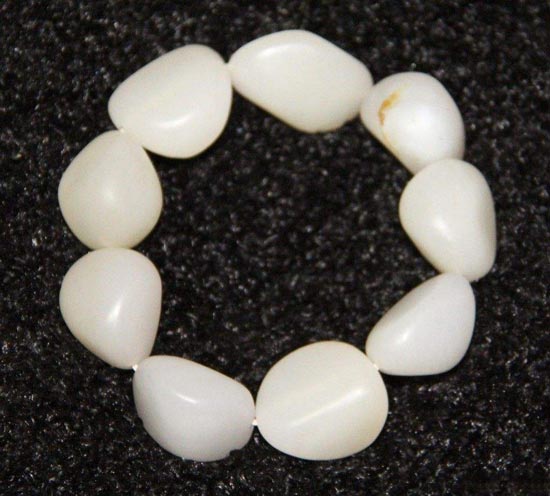
Privacy statement: Your privacy is very important to Us. Our company promises not to disclose your personal information to any external company with out your explicit permission.
![]() November 23, 2021
November 23, 2021
Hetian jade is a kind of nephrite. In China, more than 98% of the tremolite components are named Hetian jade, and Hetian jade has a broad and narrow sense. The jade in the narrow sense generally refers to Xinjiang Hetian jade. In the broad sense, Hetian jade also includes Russian jade, Qinghai jade, Korean jade and so on.
Xinjiang materials:
Xinjiang Hetian jade has a vibrite content of 95%~99%, which is a blanket-like interweaving structure. The mineral particles are extremely fine and there are few impurity minerals. These are the fine texture of Xinjiang Hetian jade, the density is high, the perception is dignified, and the weight of the hand is heavy. It is an important reason for the strong light and strong color of the oil.
Xinjiang Hetian jade has great toughness, is not easy to be broken, and is wear-resistant. It is superior to Qinghai, Russian and Korean in terms of jade carving art and fine carving.
Xinjiang Hetian jade has a Mohs hardness of 6.5 to 6.9, which makes it easy to scratch the glass without any damage. It will make a metal-like sound when struck.

Russian jade is also called "Russian material":
Most of it is produced in the Baikal area. Although it is far from Kunlun Mountain, it is a typical nephrite system with Hetian jade. Russian white jade, jasper, and sugar are common in the market. The whiteness of Russian material is superior to that of most Hetian jade. The oily feeling is lower than that of Hetian jade, and the toughness is lower than that of Hetian jade. Grease-like glass luster, slightly transparent throughout, hardness between 5.2 and 5.4.
From the gloss point of view, although the Russian jade is glass luster, it has a slightly porcelain feel and is dry. After the grinding, it became dry from the deep white, placed on the white cloth, and it was dry in the hands.
From the perspective of transparency, Russian jade brightness is better than Hetian jade, but due to the coarser structure and lighter feel, it will turn yellow and black after wearing for a long time. Part of the oil is still very good to get started. It has to be worn for a long time. It will be dry for a while, and Hetian jade will not be like this. Seemingly impervious but transillumination is superior to Hetian jade translucent (often said the illusory feeling);
Korean material:
Korean materials are mostly blue, blue and gray. The structural state has many similarities with Russian materials. However, the difference in hardness is very large, 4-5.5 is lower than Russian. There is also a hardness of 3.5 or less, and the difference in material quality is also large.
(The market is mostly made up of gray and Korean materials to make Hetian jade and make seed material. The finished parts are made of wax, smoked wax, and the fake oil needs to be carefully identified.) The waxy texture is strong, and the disk is long-lasting for water-based gloss and glass. Gloss (no grease luster).
Qinghai material:
Gives a strong water-permeability feeling, white-green, light green, duck egg blue is a common variety. The shades are slightly bluish and pink. Translucent point-like fine loose cloud-like texture is a typical feature of its structure in a point-like shape, like a small grain of sand dense, sometimes there are several water lines around with "flowers." Some Golmud alpine materials are similar to Xinjiang's materials (but the blue-toned and gray-like texture at first glance is the main source of Hetian seed).
Jade species are common white jade, sapphire, tobacco, blue and white, green and white with green color. Green white jade, sapphire: green gray - dark gray green, darker and darker, partially mixed with brown spots (now part of the market is called Qinghai jasper called Qinghai jasper). Smoke: The material is fine and has no obvious structure, clear and transparent, and the jade is mixed with ink. Blue and white, similar to Hetian blue and white (Hetian blue and white are mostly seed), light black aggregates scattered in jade.
The above is the The difference between Xinjiang Hetian jade, Russian material, Qinghai material and Korean material we have listed for you. You can submit the following form to obtain more industry information we provide for you.
You can visit our website or contact us, and we will provide the latest consultation and solutions
Send Inquiry
Most Popular
lastest New
Send Inquiry

Privacy statement: Your privacy is very important to Us. Our company promises not to disclose your personal information to any external company with out your explicit permission.

Fill in more information so that we can get in touch with you faster
Privacy statement: Your privacy is very important to Us. Our company promises not to disclose your personal information to any external company with out your explicit permission.